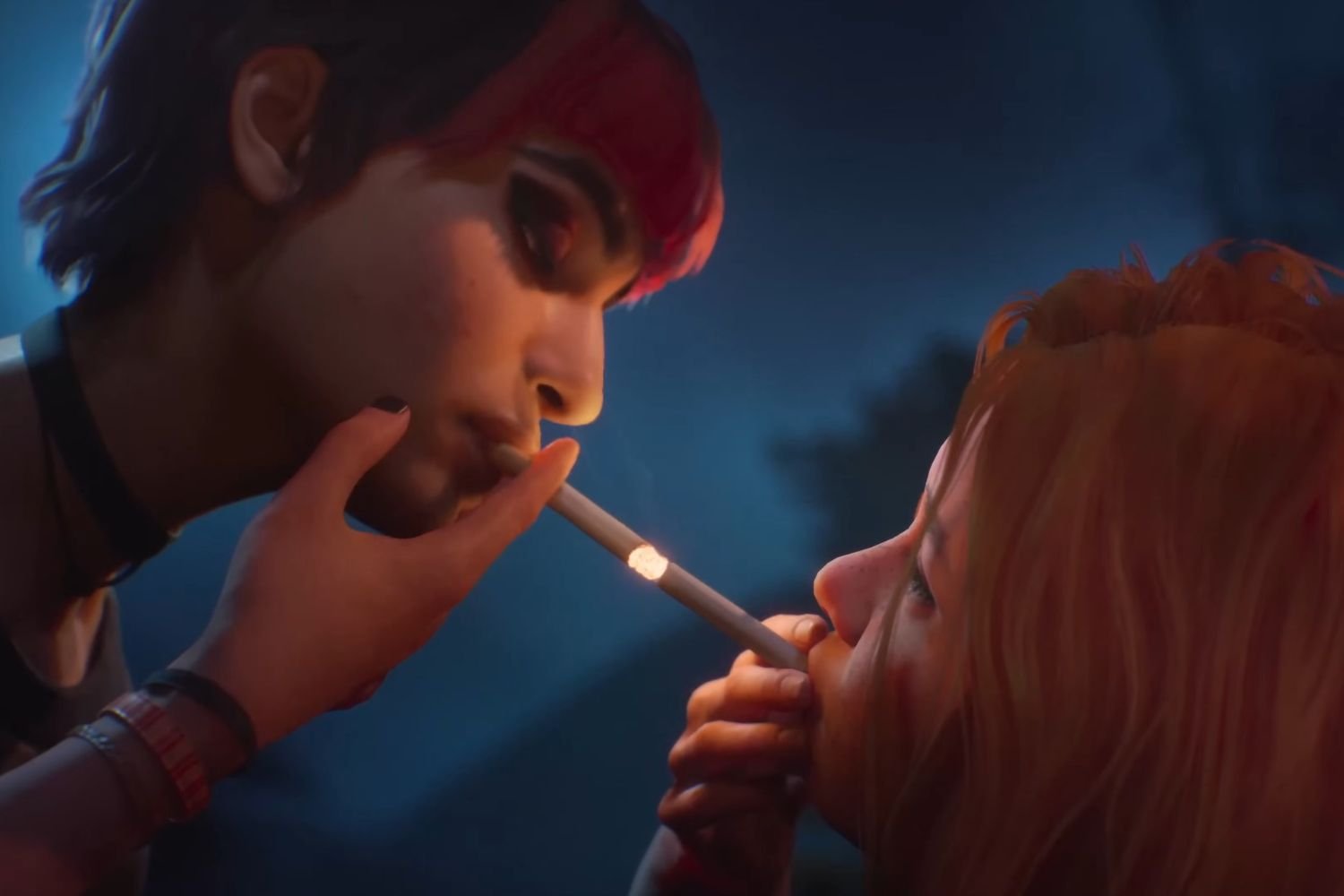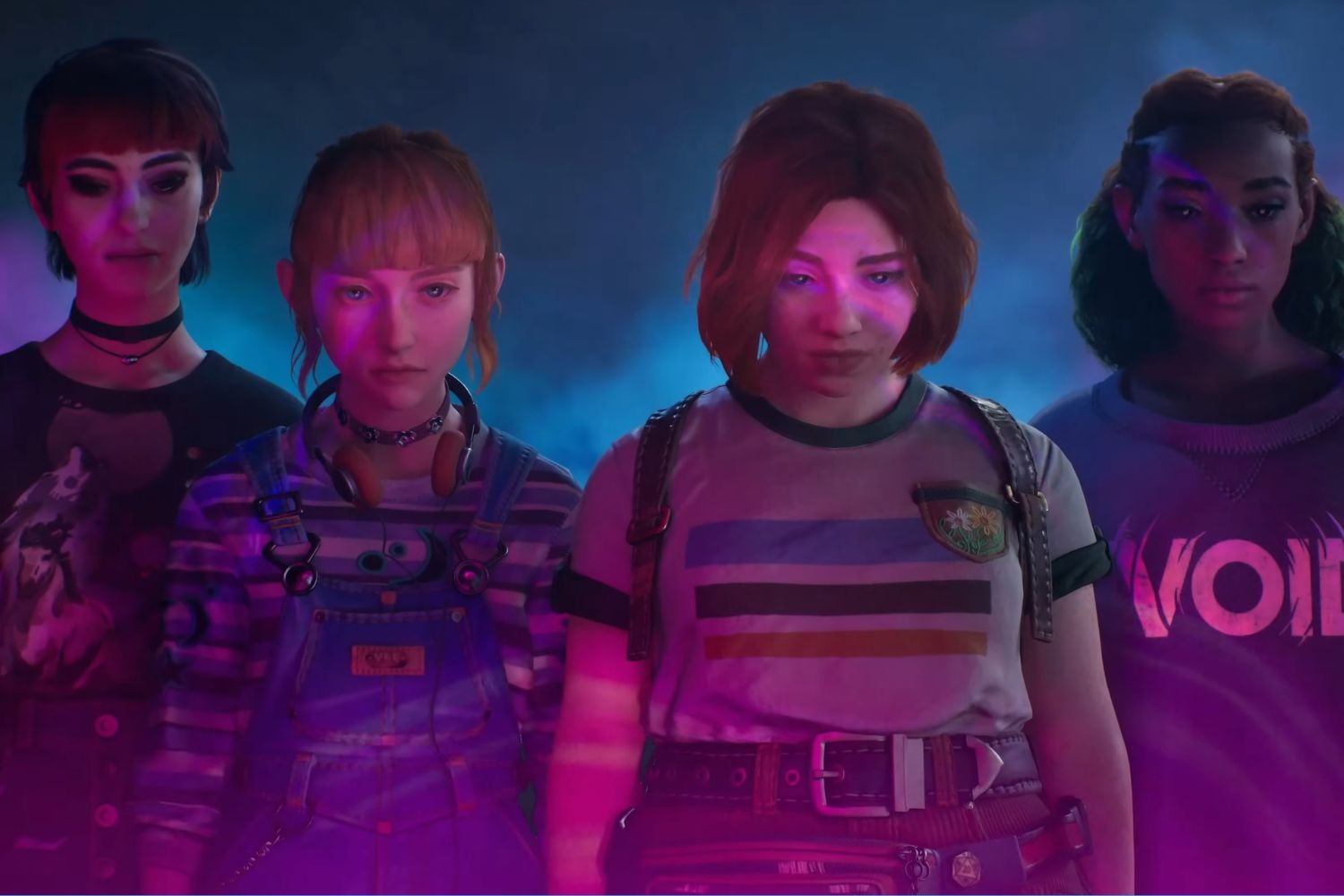In 2025, the creators of the franchise Life is Strange et Downstream will take us into the past with Lost Records : Bloom & Rage. A narrative adventure about the summer of 1995 for four teenage girls, while a unexplained event turns their lives upside down forever. Through the video rushes captured by Swan during his childhood, it will be necessary to put the pieces of the puzzle together once he becomes an adult, and try to finally shed light on this amnesiac episode.
Straddling two eras, Lost Records : Bloom & Rage is a narrative bridge between the present and the past, between adulthood and a childhood already distant. Several months before its official release, we had the opportunity to test the demo version of the game at Gamescom 2024. Behind what promises to be one of the most memorable titles of next year, the creative team agreed to answer our questions.
Lost Records : Bloom & Rage is an experience in its own right, with a narrative that plays across multiple eras, and a legacy that should speak to 90s kids. What were your inspirations in creating the game?
Creative Team: Obviously, we looked at things that resembled what we wanted to do. For example, That by Stephen King that actually takes place in two separate eras. There was also the series Sharp Object on HBO, which tells the story of a journalist who returns to her native life to do an article, and who is confronted with her memories. She sees herself again as a young person, there are a lot of flashbacks, and that’s something that interested us in terms of timeline, of how to articulate the game.
There is also a mysterious force, of magic, which revolves a little around the story. On this point, we had the series as a reference Twin Peakswhich we like a lot, and which shows well this way of bringing the supernatural. We also discovered things during the creative process, like the film from the 90s Fox Fire that we didn’t know. And then, obviously, we had the legacy of our previous games, with the DNA Life is Strange et Life is Strange 2.
Why this desire to have created a game spanning two eras?
Creative Team: First, we are talking about two periods that are not insignificant. The two great existential crises of life are the teenage crisis and the midlife crisis. But this is not necessarily pejorative: It is more a questioning and an upheaval of one’s certainties. Adolescence happens at the same time as a major change in hormones, so inevitably, it can be a little more violent. The midlife crisis is more calm, but perhaps also a little deeper… It seemed interesting to us to talk about characters who are at two pivotal periods in their lives.
Then, telling a story about two eras also allowed us to talk about certain subjects seen through the eyes of a teenager and the same subjects seen a little later through the eyes of an adult, with all the perspective and difference that this implies.
In the version we were able to test, you can only play as one of the four characters. Will it be possible, later on, to play as the other girls and have more action in the present time?
Creative Team: So, no and yes. We asked ourselves the question at the beginning, we wondered if we should embody the different points of view. And finally, we felt that it would be stronger, more interesting to embody only Swan. On narrative games where the player embodies several characters, we can quickly create somewhat schizophrenic situations where you start by playing Swan, you make your choice of answers, you get an idea of who she is… And then, you play Autunm, and you will have the game that will make Swan answer “in your place“. It can quickly become frustrating.
Swan’s camcorder plays a central role in the gameplay. Can you tell us a bit more about it?
Creative Team: Swan is very introverted, so she hides a bit behind her camera. The game starts when she moves, so she decides to film her memories, she documents her life, to keep memories. It’s really the basic mechanics, to film, zoom, record. At the beginning, it really starts like a documentary, you can film the environment, the forest, the buildings, her room… Then gradually, it becomes a socialization tool. Thanks to the camcorder, Swan will also get closer to her friends, she will be able to film their videos, and players will be able to trigger dialogues depending on what they film.
In terms of gameplay, this camcorder is really used as a direct link between the players and the game. It makes the interaction more dynamic, but it will also become a tool in the plot, for example to zoom in on things that are too far away, to light up night scenes… There are things that seem innocuous that you film, and that you will absolutely have to look at through the camera afterwards.

Object manipulation and associated sound design play a central role in the game’s plot and immersion. Is this something that was important to you?
Creative Team: Indeed, there is a lot of object manipulation. It adds a certain immersion, a context, and for us, it is a very important dimension in the game. To recreate the atmosphere we wanted, the sound design team bought old VHS cassettes, moo boxes… we really wanted to recreate something nostalgic for players our age. For example, there is a 16-bit game cartridge, and a lot of people told us they wanted to blow into it. So the team bought a cartridge, and recorded the sound. It adds an authentic side, we want players to want to touch the objects, to manipulate them. Especially since these are not just any objects, these are things from the 1990s that many grew up with. For the younger ones, there is also a curiosity around that.
The game offers a very narrative dimension, do our choices of interaction with the characters have consequences on the rest of the plot?
Creative Team: Completely. The first part of the game (which we played, Editor’s note) tells the story of the beginning of the friendship between Swan and her friends, so we are more on slices of life, with several choices that will have a fairly strong impact on the endings of the game. Obviously, there will also be choices whose impact will be more decisive. But the answer is yes: there are several endings. The goal of the game is really to write your own story, to create your version of what happened during the summer of 1995. So there will be several endings in 95, and several endings in the present.

A slightly more personal question: who is your favorite character in the game?
Luc Baghadoust, studio executive producer : For me, it’s Nora. There’s something cool, I think, in the contrast between what she gives off and her fragility, her akward side. Visually too, I find it great, for example the fact that she has acne, it’s a detail, but it’s among the things I preferred in the game.
Jean-Luc Cano, lead narrative designer : I think that like for Life is Strange and Life is Strange 2, I am extremely close to my characters. I love Swan a lot, I feel a bit paternalistic with her, I want to protect her, I want her to be happy all the time.
Michel Koch, creative director : For me, it’s more Swan too, because I identify a lot with the introverted part, it’s a bit my personality type. I really enjoyed playing Swan, making choices for her. But then, I find that all the characters, that’s what we tried to do in any case, are interesting with their own character.
Lost Records : Bloom & Rage will be released on February 18, 2025 for PC, PlayStation 5, and Xbox Series. The game was originally scheduled to be released later this year, but was ultimately pushed back to avoid fratricidal competition with Life is Strange : Double Exposure, which will be released at the end of October 2024.
Source: www.journaldugeek.com


